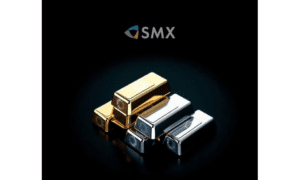Bonds are considered a safer and more stable investment compared to stocks, but for those new to trading, they can seem confusing. If you’re starting out and want to understand the basics, the guide compiled by CAPEX.com will explain what bonds are, how they work, and how you can trade them through bond CFDs (Contracts for Difference), which offer a different approach to traditional bond investing.
What Is a Bond?
A bond is a loan. When an investor buys a bond, he/she is lending money to an issuer, a government or a corporation, for a specific period. In return, the issuer agrees to pay back the original amount (called the principal) on a set date in the future (the maturity date), and to make regular interest payments (called coupons) along the way.
According to CAPEX.com experts, the value of a bond can go up or down based on factors such as changes in interest rates, the creditworthiness of the issuer, and market demand for similar investments.
How Are Bonds Bought?
There are two main ways to trade bonds:
- The primary market is where bonds are sold directly by the issuer to investors at face value.
- The secondary market is where investors trade existing bonds with one another, and the price fluctuates based on supply and demand.
Bond prices are influenced by interest rates. When interest rates rise, existing bonds lose value because new bonds offer higher returns. Conversely, when interest rates fall, existing bonds may become more valuable.
What Are the Advantages of Bond CFDs?
Bond CFDs allow traders to speculate on bond price movements without actually owning the bond itself. Instead of receiving interest payments or waiting for maturity, traders focus on price differences between the opening and closing of a position.
Some advantages of bond CFDs include:
- Access to global bond markets: Traders can engage with instruments like U.S. Treasury CFDs or German Bund CFDs without going through traditional bond markets.
- Leverage: CFDs allow the use of leverage, meaning you can open larger positions with a smaller upfront investment. However, this also increases risk.
- Flexibility: You can take a long position if you think bond prices will rise or short if you expect them to fall. This allows traders to respond to changing interest rate environments or economic news.
- No need for ownership: Since CFDs are derivatives, there’s no requirement to manage or hold the actual bond, making trading more streamlined and accessible.
CAPEX.com specialists said it’s important to note that although CFDs offer more flexibility, they are also more speculative in nature and better suited to short-term trading strategies than long-term investing.
Bond trading can serve different purposes, from long-term investing to short-term speculation. No matter if you choose to invest in bonds directly or trade CFDs based on their price, getting a grasp on how they operate is of great importance before getting involved.
Bond trading can serve different purposes, from long-term investing to short-term speculation. No matter if you choose to invest in bonds directly or trade CFDs based on their price, getting a grasp on how they operate is of great importance before getting involved.



































